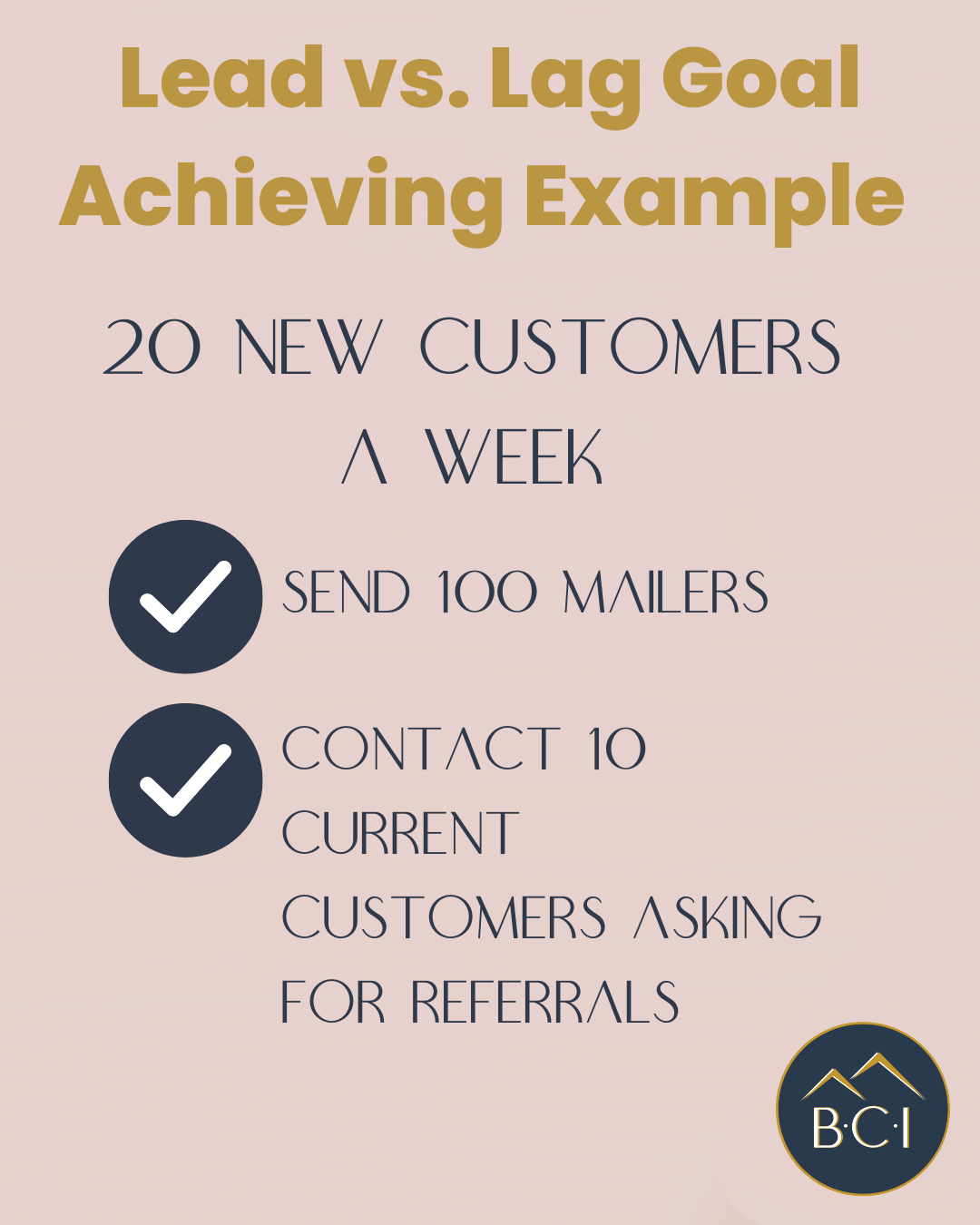Boosting Small Business Growth with Lead and Lag Indicators
For small businesses, setting goals is crucial, but not all goals are created equal. Lead indicators help predict future outcomes, while lag indicators measure success after the fact. Effective goal-setting involves using both lead and lag indicators and prioritizing benchmarking and measuring metrics and KPIs. By focusing on lead indicators like proactive outreach and referrals, small business owners can achieve their lag indicators, leading to improved sales performance and growth opportunities.
If you own a small business setting goals is important for your growth and success. But not all goals are the same. You need to know the difference between lead and lag indicators when you set your goals.
Lead indicators help you predict whether you're on track to achieve your goals. For example, if your goal is to increase sales by 20% over the next quarter, a lead indicator might be the number of new leads you get each week. By tracking this number, you can see whether you're on track to meet your sales target and make changes if needed.
Lag indicators show you how successful you were after the fact. For example, if your goal is to increase customer satisfaction, a lag indicator might be the percentage of customers who rate your service as "excellent" on a customer survey. Although lag indicators are important, they're not as useful for predicting future outcomes.
To set effective goals, you should use a mix of lead and lag indicators. Lead indicators help you stay on track and make adjustments if needed. Lag indicators measure your success after the fact. By setting goals that include both lead and lag indicators, you can make sure you're taking a proactive approach to achieving your business objectives.
As a small business owner, you might not have a lot of resources for sales enablement. So, it's essential to identify the most impactful metrics, KPIs, and activities that positively impact your revenue outcomes. Measuring sales productivity can be challenging, especially if you don't know how to measure and determine impact and value. It can also be hard to get stakeholders to agree on which metrics matter most.
To overcome these challenges, you should prioritize benchmarking and measuring metrics and KPIs. Evaluate the metrics you're currently using to make sure they directly measure and determine impact and value. Knowing the activity, conversion rate, and outcome metrics can help you determine sales productivity and set ways for these metrics to lead to achieving your company's objectives.
Let's say you're a sales manager for a software company and your goal is to acquire 20 new customers per week. To achieve this goal, you'll need to identify the lead indicators that will drive the desired outcome.
One lead indicator could be to send 100 mailers to potential new customers each week. This is because sending mailers is a proactive step that can generate interest in your software among potential customers. By sending out a specific number of mailers each week, you can create a measurable metric that you can track and adjust as needed.
Another lead indicator could be to contact 10 current customers and ask for referrals each week. This is because referrals can be a highly effective way to generate new leads. By actively seeking referrals from your existing customer base, you can tap into their networks and potentially reach new customers who are more likely to be interested in your software.
By focusing on these lead indicators, you can create a clear plan of action that will help you achieve your lag indicator of 20 new customers per week. By tracking your progress on a regular basis and making adjustments as needed, you can increase your chances of reaching your sales goals and growing your business over time. This can lead to greater teamwork within your sales team, increased sales performance metrics, and improved sales effectiveness and efficiency.
Some lead indicators that can provide insight into sales productivity include the number of calls made, emails sent, videos shared, meetings scheduled, opportunities created, and the value of those opportunities. Using these metrics to coach your team can boost productivity, ensure revenue goals, and promote continuous growth within your sales cycle and future growth.
In conclusion, lead and lag indicators are important for any small business owner looking to set and achieve goals. If you need additional help in setting goals that have both lead and lag indicators for your small business, complete a FREE Business Assessment and Schedule a Coaching Call with Stacey, a Certified Business Made Simple Coach with Build. Change.Impact.



